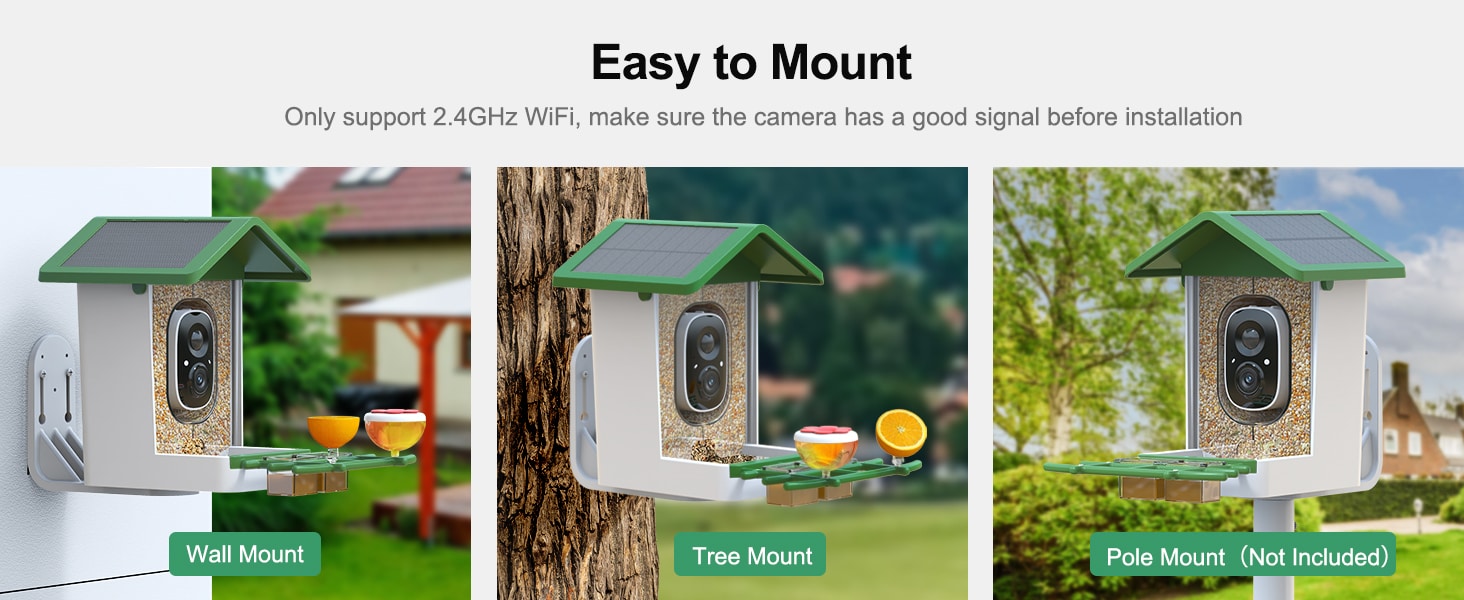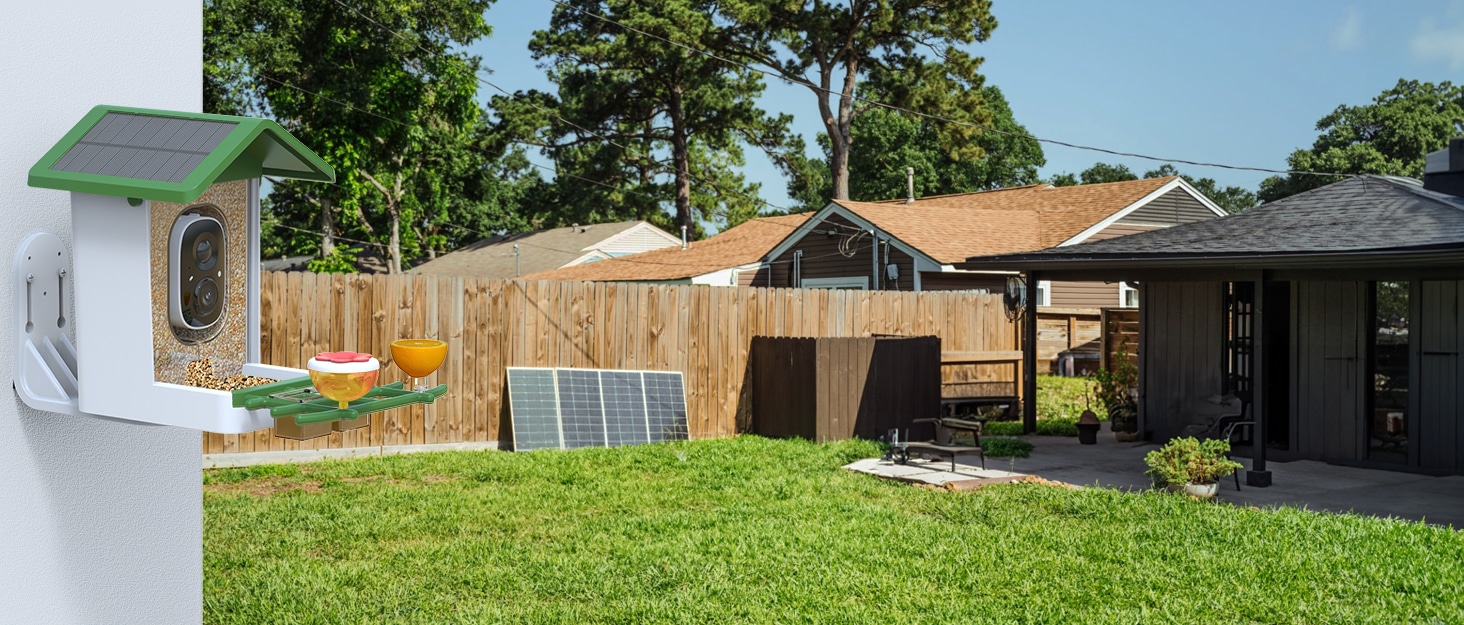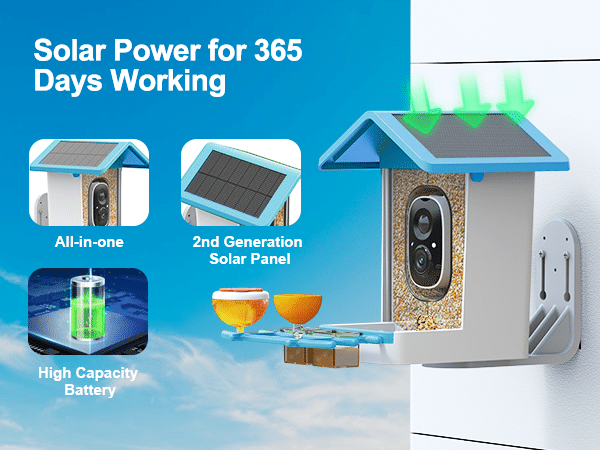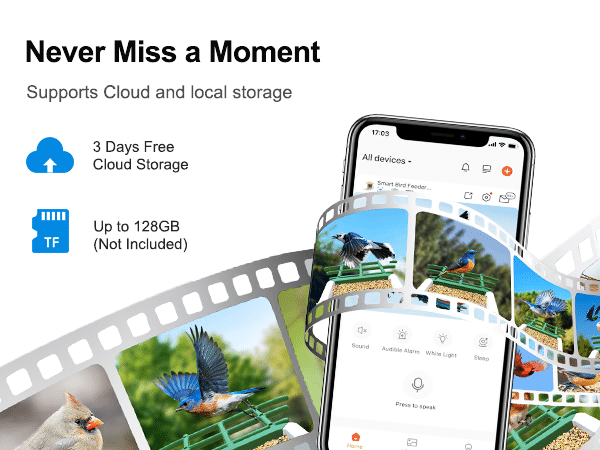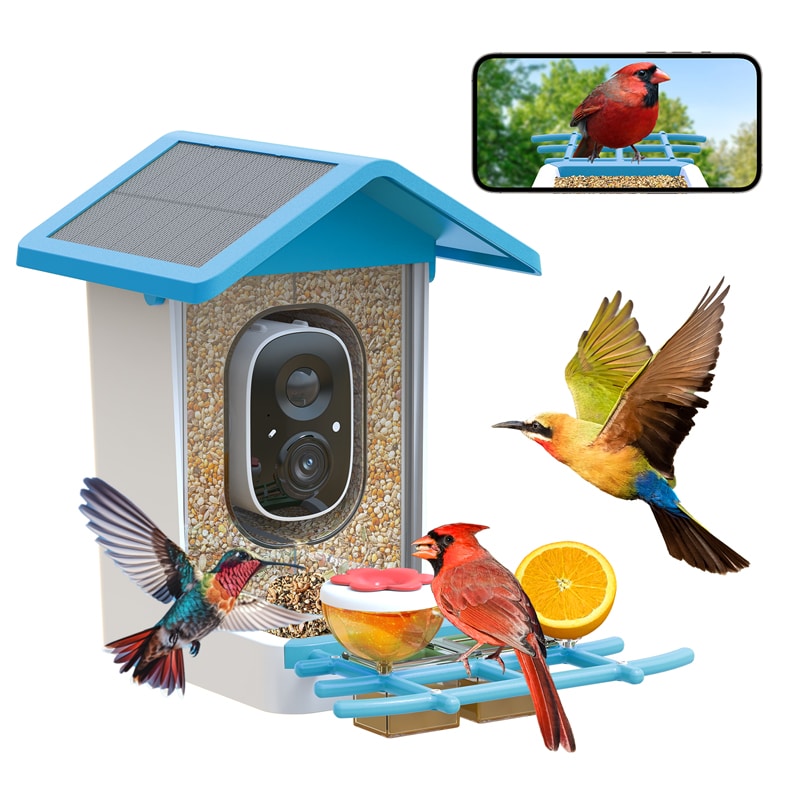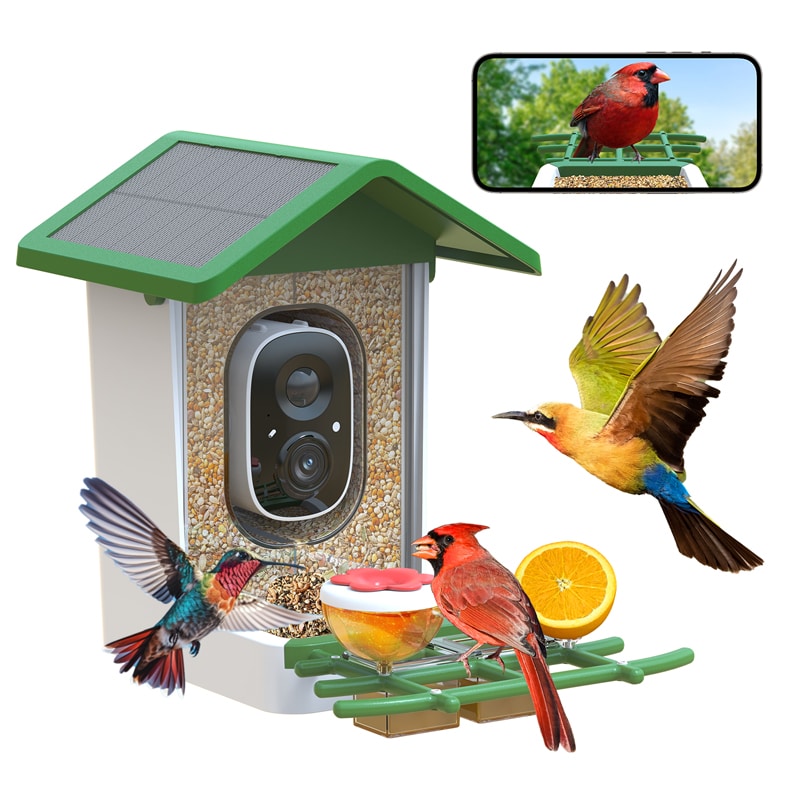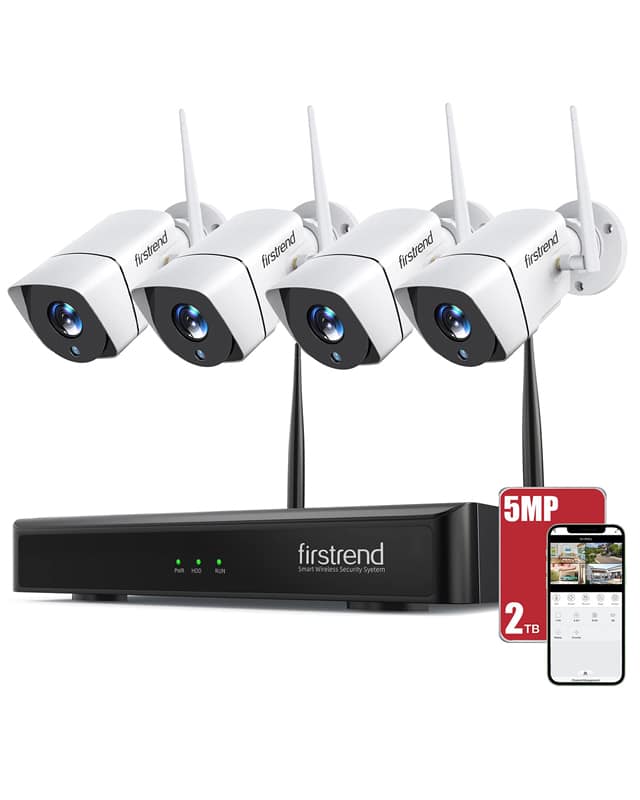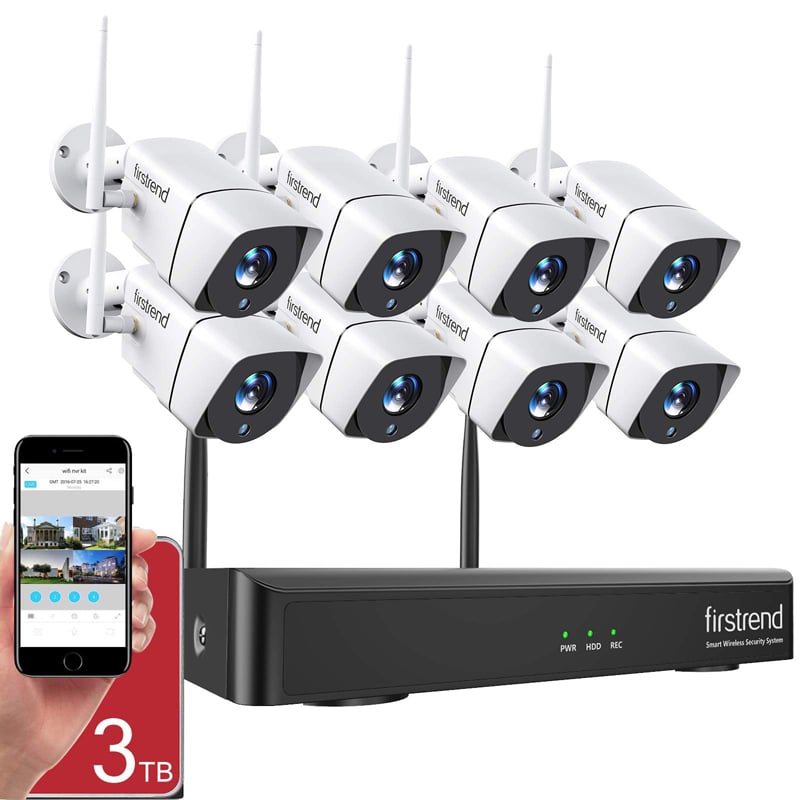Hanging a bird feeders may seem easy, but location matters more than most people think. Whether you’re using classic seed feeders or modern bird feeders with cameras, strategic placement helps you attract more birds, keep them safe, and make viewing more enjoyable for you.
Here’s how to find the right spot for your feeders while creating a bird-friendly environment in your yard.
1. Stay Away from High-Traffic Areas
Birds aren’t fans of noise or commotion. Placing feeders too close to driveways, doorways, or noisy appliances can discourage them from visiting. Choose a spot that’s calm and quiet — away from footpaths and barking dogs.
A peaceful environment is especially important if you’re using a bird house camera. Birds are more likely to nest and stay nearby when they feel safe and undisturbed.
2. Offer Natural Shelter Within Reach
Birds need quick access to cover in case predators appear. That’s why placing feeders near bushes or trees, around 10 to 12 feet away, is ideal. This gives birds an escape route without letting squirrels leap onto the feeder directly.
If you’re setting up a hummingbird feeder with camera, placing it close to flowering plants like bee balm or salvia can help attract hummingbirds naturally. These birds often visit blossoms before finding your feeder.
3. Avoid Harsh Exposure
Feeder placement should account for weather. Direct sunlight all day can heat up seeds or spoil nectar, while windy areas scatter food and make perching difficult.
Instead, aim for a location with dappled sunlight or morning light only. This keeps food fresh and gives birds a more comfortable feeding experience. Plus, it improves video quality for bird feeders with cameras, avoiding glare or backlighting.
4. Make Maintenance Easy
It’s not just about the birds — you’ll also need to clean and refill your feeder. Choose a spot that’s easy to reach and clear of deck railings or furniture that might get messy with fallen seeds or droppings.
For smart feeders, including those from Firstrend, easy access matters even more. You’ll want to check your camera, recharge the unit (if needed), and ensure a solid Wi-Fi signal, especially for features like real-time alerts or two-way audio.
5. Set It Where You Can Enjoy the View
Half the fun of bird feeding is watching them. So place your feeder where you can see it from inside your home, like near a kitchen window, porch, or workspace. If your feeder includes a camera, make sure the lens isn’t facing directly into the sun or blocked by branches.
Smart models like Firstrend’s bird feeders with cameras stream live video straight to your phone and even use AI to identify bird species. Choosing a visible spot with strong natural light enhances both your view and the footage quality.
6. Prevent Unwanted Visitors
Birds aren’t the only ones interested in your feeder. Squirrels and raccoons can become frequent nuisances. To avoid this:
- Use poles with baffles
- Hang feeders on thin lines or from window mounts
- Keep feeders away from fences or overhanging limbs
For high-tech deterrents, Firstrend’s smart feeders feature two-way audio and an alarm system you can activate remotely through the app. This allows you to deter squirrels without stepping outside.
Smarter Bird Feeding Starts With Smarter Placement
Great birdwatching isn’t just about the feeder — it’s about where and how you use it. Whether you’re hanging a classic seed tube or setting up a hummingbird feeder with camera, a thoughtful location helps you create a space that birds will return to every day.
Firstrend’s line of bird feeders with cameras and bird house camera models adds even more to the experience. With:
- 1080P HD video
- AI bird recognition
- Dual solar + USB power
- App-based alerts
- Voice or alarm-based squirrel repelling
…they’re a great way to bring nature into your home while keeping your bird guests safe and coming back.

